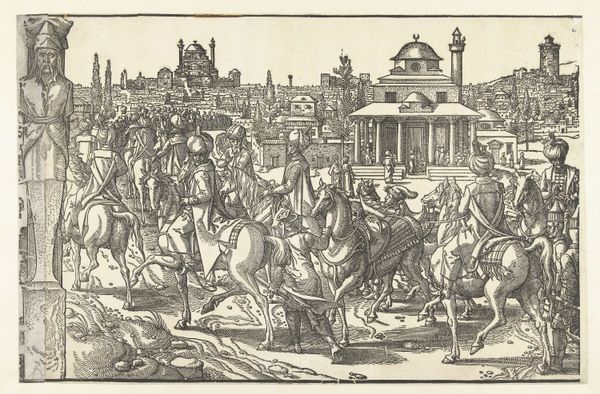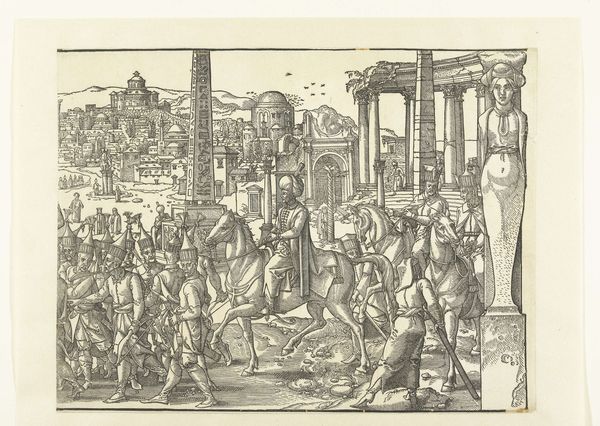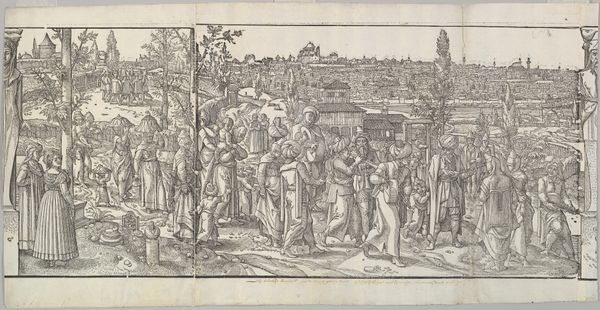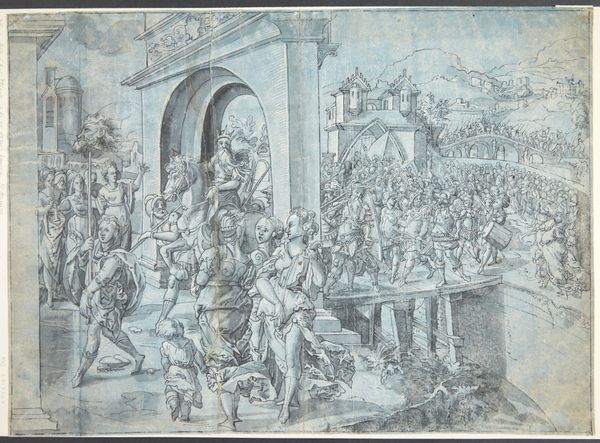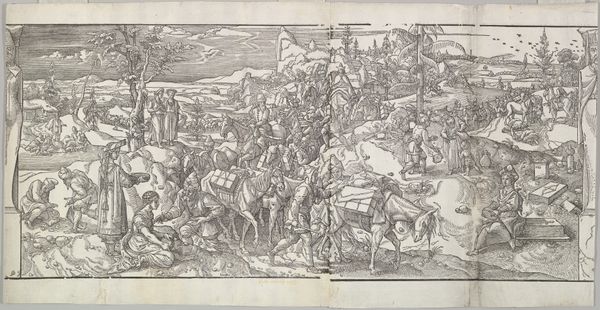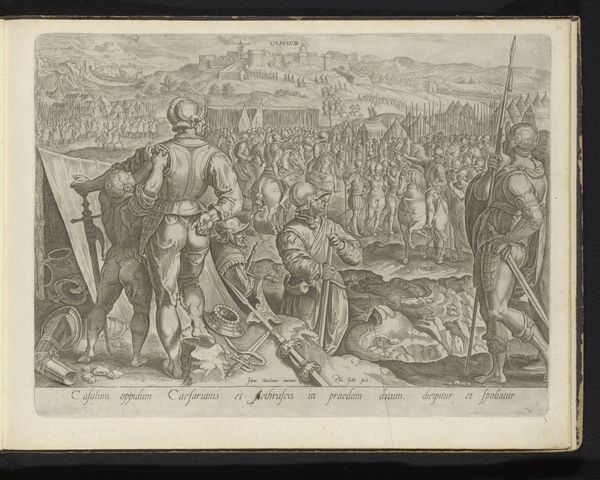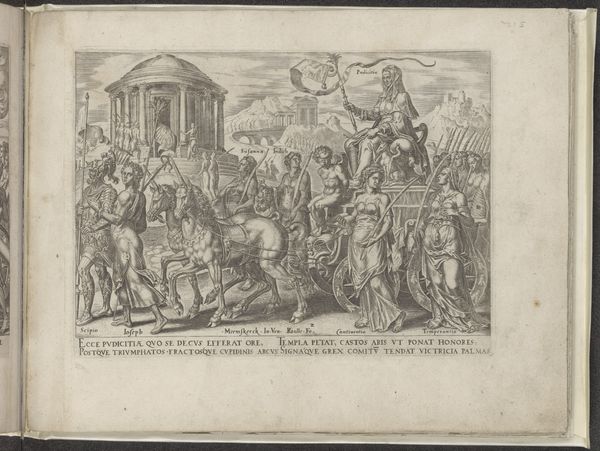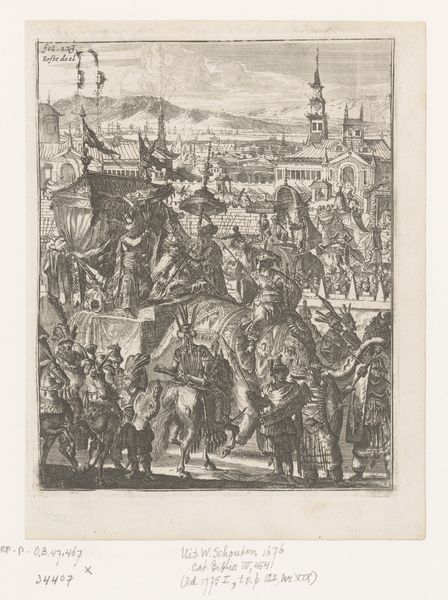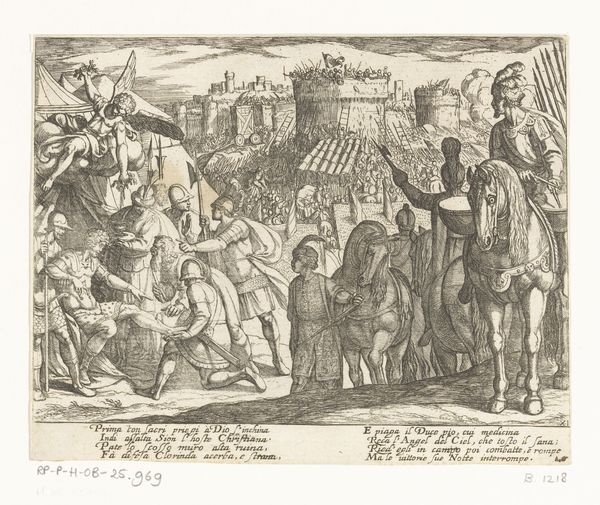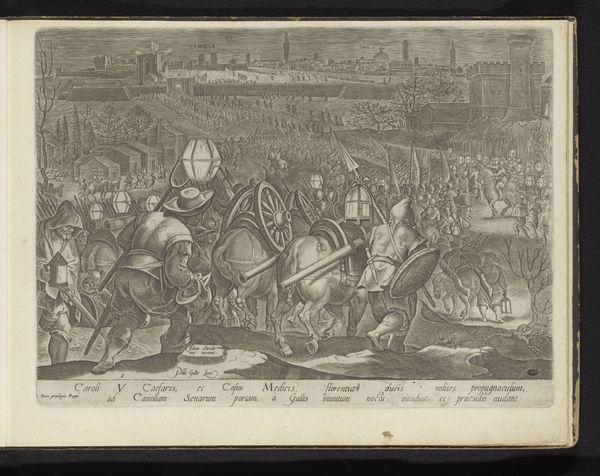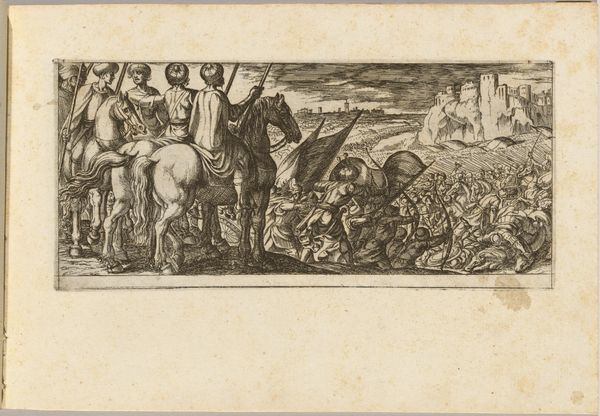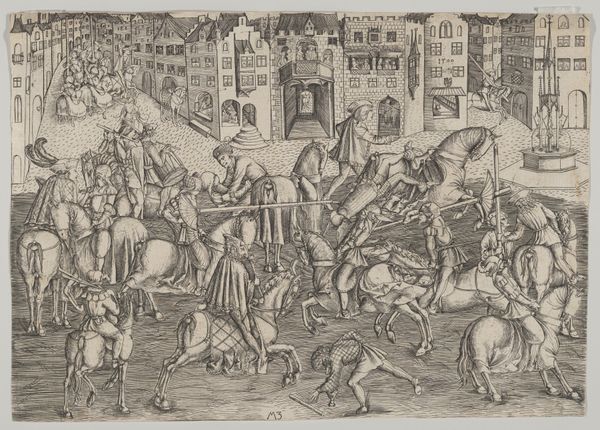
Procession of Sultan Süleyman through the Atmeidan from the frieze Ces Moeurs et fachons de faire de Turcz (Customs and Fashions of the Turks) 1553
0:00
0:00
drawing, print, woodcut
#
drawing
#
pen drawing
# print
#
11_renaissance
#
woodcut
#
orientalism
#
history-painting
Dimensions: Sheet: 13 7/8 × 34 3/8 in. (35.2 × 87.3 cm)
Copyright: Public Domain
Editor: Here we have Pieter Coecke van Aelst’s "Procession of Sultan Süleyman through the Atmeidan," a woodcut from 1553. It has a panoramic quality, filled with so many details… I'm curious about how this type of image functioned at the time it was created. What stands out to you? Curator: It's crucial to acknowledge that this image comes from a moment of intense cultural exchange, but also significant power imbalances between Europe and the Ottoman Empire. Van Aelst never actually traveled to Istanbul. So, we have to ask: whose perspective is really being represented here? Editor: You mean, the image might reflect more about the West's perception of the East than actual Ottoman culture? Curator: Exactly. The "exotic" details – the elaborate costumes, the bustling cityscape – are presented for a European audience hungry for knowledge of the "other." Consider also the title, from the frieze “Customs and Fashions of the Turks.” What underlying assumptions are at play? Editor: So it's not just a neutral depiction, but an interpretation loaded with its own biases. The artist includes Roman ruins and obelisks next to mosques…Was there a suggestion about linking the Ottoman empire to the Roman empire and its ultimate demise? Curator: Precisely! Think about the power dynamics embedded in visual representation. By placing Süleyman's procession within a framework familiar to European viewers, Van Aelst subtly asserts a sense of Western cultural dominance. What effect do you think such depictions might have had? Editor: It could have solidified stereotypes, created distance and reinforced a sense of European superiority. Thanks. Now, I understand more about how the image's meaning is so much more intricate, laden with social and cultural meaning.
Comments
No comments
Be the first to comment and join the conversation on the ultimate creative platform.
